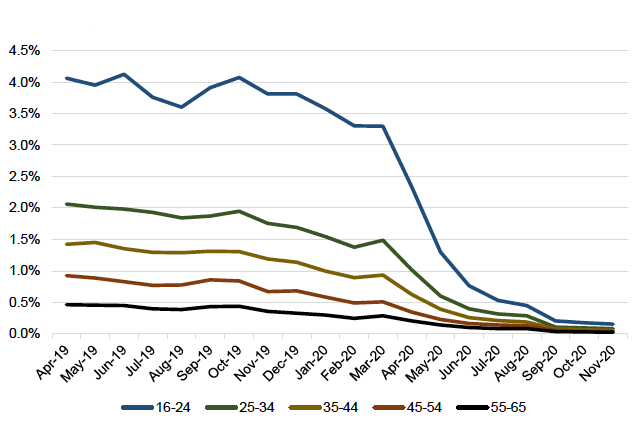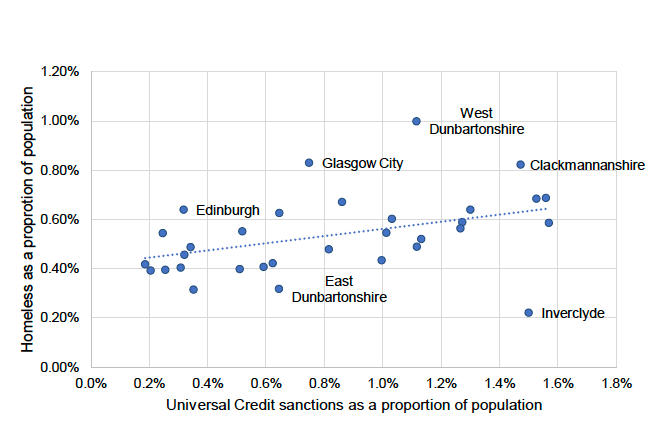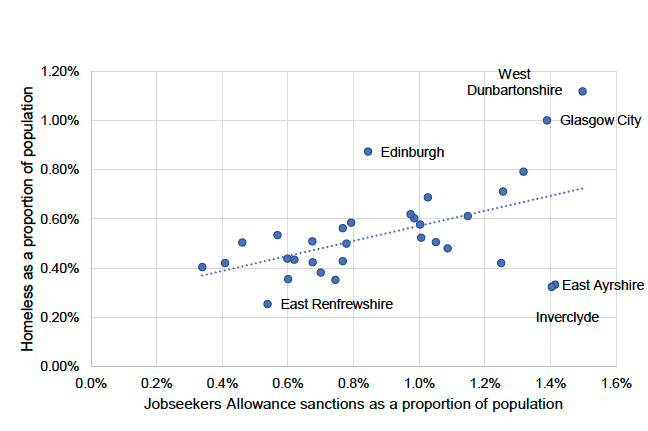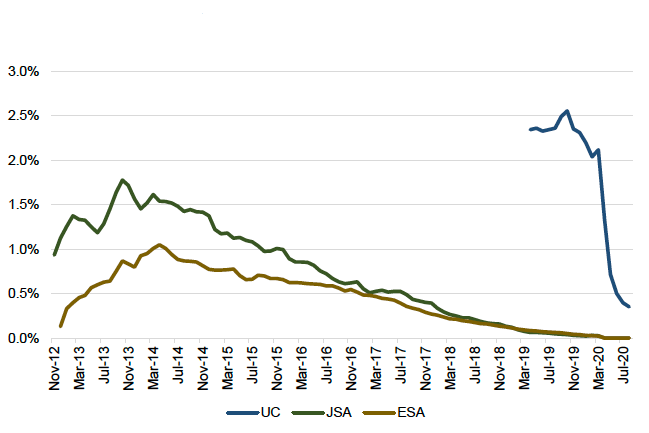Homelessness and Universal Credit: research report
A range of literature indicates that various features of Universal Credit can result in homelessness and a number of correlations between homelessness and Universal Credit can be observed in the data.
3. Sanctions
Sanctions are where benefits are reduced or stopped when a claimant is deemed to have broken the conditions for receiving a payment. This can include missing meetings or appointments, or not looking for work. A range of evidence points to a link between sanctions and homelessness.[11] For example, analysis conducted by Crisis suggests that homeless people are twice as likely as other jobseekers to be have been sanctioned.[12] In another study, over half of frontline workers had come across people who had been made homeless as a result of a sanction under UC.[13]
Rent arrears are one of the primary results of sanctions, along with food poverty and other financial difficulties. There is also a range of evidence showing that sanctions can be detrimental to various aspects of mental health.[14] Besides reducing income, sanctions are often a surprise, and therefore impact on the ability to plan finances. In a study North East England, most participants found out that they were sanctioned when trying to withdraw money from a bank account rather than through communication from DWP.[15]
As shown in Figure 6, UC sanction rates are particularly high for young people, who may be particularly prone to rent arrears. According to the Resolution Foundation, young people tend to be less likely to own their own home; be more likely to live in the private-rented sector; spend a greater share of their net income on housing costs; be more likely to live in overcrowded accommodation; and have less household wealth.[16]

Source: DWP, Stat-Xplore
There is also a statistically significant correlation between sanctions and homelessness across Local Authorities in Scotland, as shown in Figure 7. This correlation does not demonstrate that sanctions cause homelessness, as there are a range of background factors which likely contribute to both sanctions and homelessness.[17] Nor does the correlation demonstrate that UC sanctions are more detrimental than sanctions under legacy benefits. As shown in Figure 8, before UC was introduced, there was an even stronger correlation between homelessness and sanction rates under Jobseekers Allowance (JSA).[18]

Sources: DWP, Stat-Xplore; Scottish Government, August 2020, Homelessness in Scotland: 2019-20; National Records of Scotland, April 2020, Mid-2019 Population Estimates Scotland

Sources: DWP, Stat-Xplore; Scottish Government, August 2020, Homelessness in Scotland: 2019-20; National Records of Scotland, April 2020, Mid-2019 Population Estimates Scotland
However, conditionality under UC is widely considered to be more severe than under legacy benefits, both in terms of which groups are subject to conditions and in terms of the conditions themselves.[19] This is supported in the data: although sanctions were suspended at the outset of the pandemic and are being reintroduced in phases, pre-Covid sanction rates for UC are higher than for either JSA or ESA, as shown in Figure 9.[20]

Source: DWP, November 2020, Benefit sanctions statistics to July (experimental)
Contact
Email: spencer.thompson@gov.scot
There is a problem
Thanks for your feedback